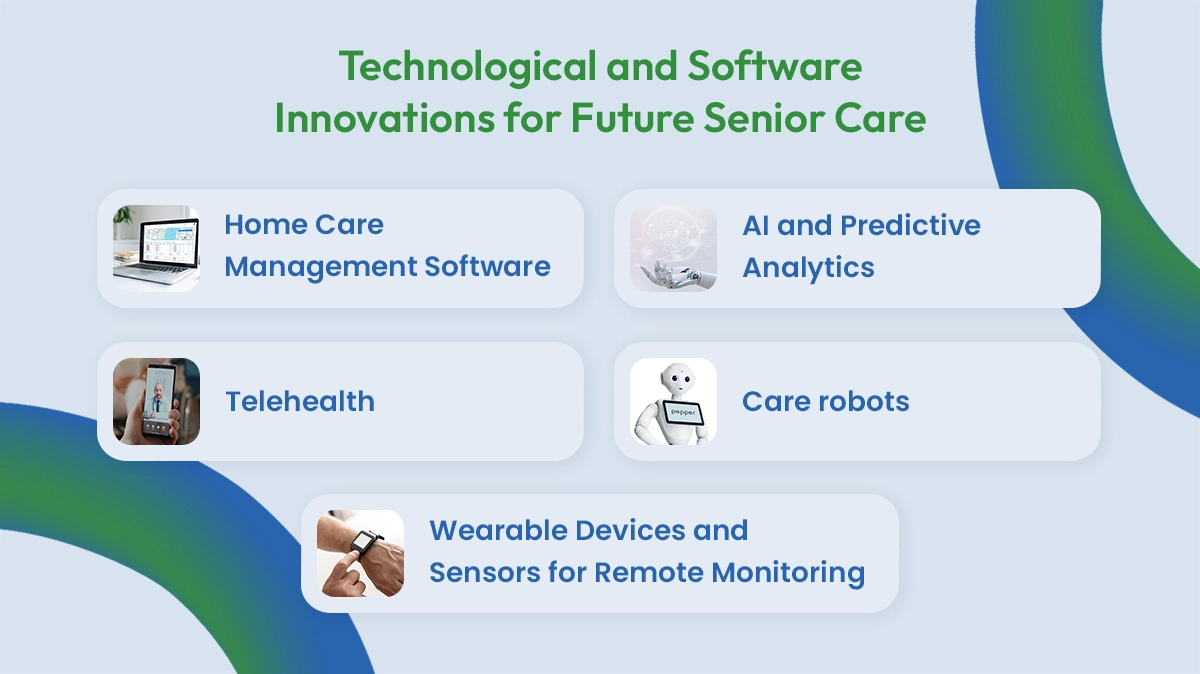🚀 We are finalizing all preparations to introduce you to the most powerful homecare software. Join the waitlist to witness something truly advanced in Summer 2025! Thank you for your interest.

See in real time what Jiris can do for you. Let the power of AI transform your agency
Get a DemoWhen Paul R. Ehrlich's book, "The Population Bomb", was published in 1968, it put the entire world on high alert. He predicted overpopulation and mass starvation by as early as the end of the 1970s and the collapse of modern civilization as we know it. As you might have noticed, half a century later, humanity is in a much better place.
According to the U.S. Bureau of Labor Statistics, at least in America, in the last 50 years, technological progress has allowed an increase in labor productivity of 100%, resulting in a more prosperous society. Similar improvements occurred around the globe. The latest data suggests that despite the world population doubling, the rates of extreme poverty and hunger have been reduced from 40% to around 10%. These impressive achievements have proven humanity’s resilience and ingenuity in the face of adversity, but there is a new problem on the horizon: aging nations and depopulation.
In this article, we will discuss the unique elder care challenges posed by a rapidly aging demographic. These challenges are exacerbated by a decrease in the labor force, which is expected to fund social security and provide care for senior citizens. Specialized care, rising pressure on the healthcare system, and higher costs are the major issues that the upcoming generations will have to address.
The latest data collected by the United Nations suggests that the world’s population will continue rising from 8.2 billion in 2024 to 10.3 billion in the 2080s. However, there is a caveat to these figures. As of today, the population size has already peaked in 63 countries (some of them are major economies and among the world’s most populous countries: Germany, Japan, South Korea, China, Italy, and the UK joining in 2025), and from now on it will only be declining.
Even though numbers indicate that the US population will keep growing until the second half of the century, there isn’t much room for optimism. Positive immigration is still driving the numbers of Americans up, but the birth rates are constantly surpassing their historical lows. In 2023, the U.S. Centers for Disease Control and Prevention recorded 1.6 births per woman, which is far below the necessary 2.1 births to sustain a long-term generational replacement of the population. This trend could be attributed to several factors, including women's increased access to education and participation in the workforce, lower child mortality rates, and the rising costs of raising children.
At the same time, the demographic shift within the nation is palpable. While the number of newborns is decreasing, the life expectancy of the overall population is increasing by 2 years per decade. Today, the National Center for Health Statistics calculates the life expectancy age in the USA as 77.5 years; from 2010 to 2020, the senior population grew by 38.6%, the fastest rate since record-keeping began in the 1880s. This trend is expected to continue, with projections indicating that by 2050, there will be around 82 million seniors, accounting for about 23% of the population.
 The majority of developed countries embrace a certain social contract. After a lifetime of paying taxes and contributing to the community, seniors expect to be taken care of through receiving pensions and being provided with special care facilities and services. Unfortunately, in a society that is going through a demographic decline, this social contract generates great challenges. A smaller working-age population must support the growing number of retirees with longer life expectancy. By 2030, ten thousand Baby Boomers will be reaching the age of 65 daily, and 70% of them will need long-term care at some point in their lives.
The majority of developed countries embrace a certain social contract. After a lifetime of paying taxes and contributing to the community, seniors expect to be taken care of through receiving pensions and being provided with special care facilities and services. Unfortunately, in a society that is going through a demographic decline, this social contract generates great challenges. A smaller working-age population must support the growing number of retirees with longer life expectancy. By 2030, ten thousand Baby Boomers will be reaching the age of 65 daily, and 70% of them will need long-term care at some point in their lives.
This trend will be extremely challenging for Medicaid, Medicare, and Social Security programs that are constantly making the news of being in danger of insolvency and bankruptcy. The Social Security system (SSS) is projected to experience a decline in the worker-to-beneficiary ratio, falling from 3.3 in 2005 to 2.1 by 2040. This will strain the system's financial resources, potentially leading to reduced benefits or increased taxes to maintain solvency. Medicaid will also be under pressure as more seniors deplete their private resources and rely on Medicaid-financed healthcare and nursing homes.
Overall, the Congressional Budget Office projects that the federal spending on major public health programs for the elderly will rise from 6.6% of gross domestic product (GDP) in 2020 to 9.2% of GDP in 2050, and the numbers will only keep climbing.
Additionally, besides the financial challenges of senior care, there is an issue of the overall approach. The impact of the aging population requires an evolved framework of the care system. The focus should be shifting towards managing chronic illnesses like diabetes and heart disease, addressing mobility issues, and treating mental health conditions such as dementia and depression. Long-term care is essential for many seniors requiring support with activities of daily living (ADLs) like bathing, dressing, and medication management. However, resources are often limited, with caregiver shortages and high costs posing significant hurdles.
Patients with multiple chronic conditions (MCCs) (two or more chronic diseases lasting at least a year, requiring ongoing medical attention, or limiting daily activities) are the ones who are the most reliant on and taxing for the health service system. This segment of the population almost entirely consists of older adults who suffer from such common conditions as hypertension, arthritis, heart disease, cancer, diabetes, and chronic kidney disease. Many of them will eventually require end-of-life care as well.
This rising number of patients is not only putting a financial strain on the economy but also raising the demand for the health workforce. A study published by the Association of American Medical Colleges (AAMC) estimates a future shortage of physicians; in fact, by 2033, the primary care system might be short of 139,000 medical professionals. This situation is expected to have severe implications for the health sector, as it affects the access, quality, and cost of healthcare for seniors, as well as the health outcomes and satisfaction of the population.
1.2 million Americans are already residing in 15,000 certified nursing homes, and many of them are in need of special medical attention. Based on the Genworth 2023 Cost of Care Survey, in the United States, the median cost for nursing home care per month is $8,669 for a shared room and $9,733 for a private room. These figures suggest that the strategy of increasing the number of medical facilities and nursing homes to address elderly healthcare issues and meet the growing needs of the aging population is economically unsustainable. Therefore, healthcare systems around the world are seeking more cost-effective solutions. The National Institute of Aging advises to consider staying at home as one gets older—the so-called “aging in place."
In this framework, home care is increasingly seen as a vital alternative to nursing homes or assisted living facilities. This strategy promotes autonomy and dignity for the elderly, allows seniors to maintain independence, enhances comfort and familiarity, and can reduce geriatric healthcare costs. Home care services range from personal care and skilled nursing to companionship, and demand for them is growing.
However, this sector faces its own challenges, including caregiver shortages and extensive training requirements to provide high-quality nursing care. The Bureau of Labor Statistics (BLS) projects that the demand for home health aides will grow 34% by 2030, much faster than the average for all occupations. If not addressed, these shortages could impact the availability and quality of home care for seniors.
 Technology has the potential to transform senior care, making it more accessible, efficient, and personalized. Key advancements include:
Technology has the potential to transform senior care, making it more accessible, efficient, and personalized. Key advancements include:
These innovations improve senior care by promoting preventive health measures and minimizing hospitalizations, ultimately helping to reduce healthcare costs.
The aging population's impact on healthcare is among the most significant challenges of the 21st century. As nations grapple with declining birth rates and increasing life expectancy, the pressure on healthcare systems, social security, and economic structures intensifies.
To effectively address these challenges of an aging society, a multifaceted approach is required. Policymakers, healthcare providers, and technology developers must collaborate to create sustainable and innovative solutions. Emphasizing preventive care, leveraging technology, and supporting home care initiatives will be crucial in ensuring that seniors receive the care they need without overwhelming the healthcare system.
Since home care emerges as the most cost-effective and dignified alternative to traditional nursing homes and assisted living facilities, it is crucial to equip home care agencies with advanced home care management software like Jiris. Get a free demo now!
AI assistant, smart shift assignment, and more. All-in-one solution for your home health agency. Our software expert will show you all features and how your organization can benefit from Jiris software.
Request your free live demo!Now it’s time to schedule your meeting
Schedule Now Need to fix your submission?Rate this article: